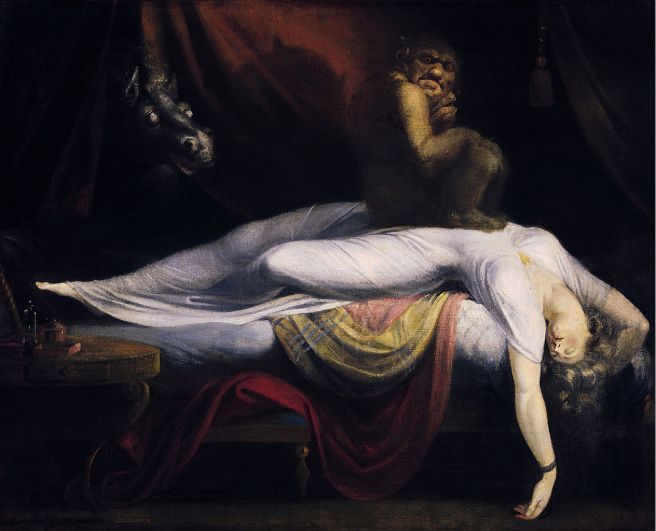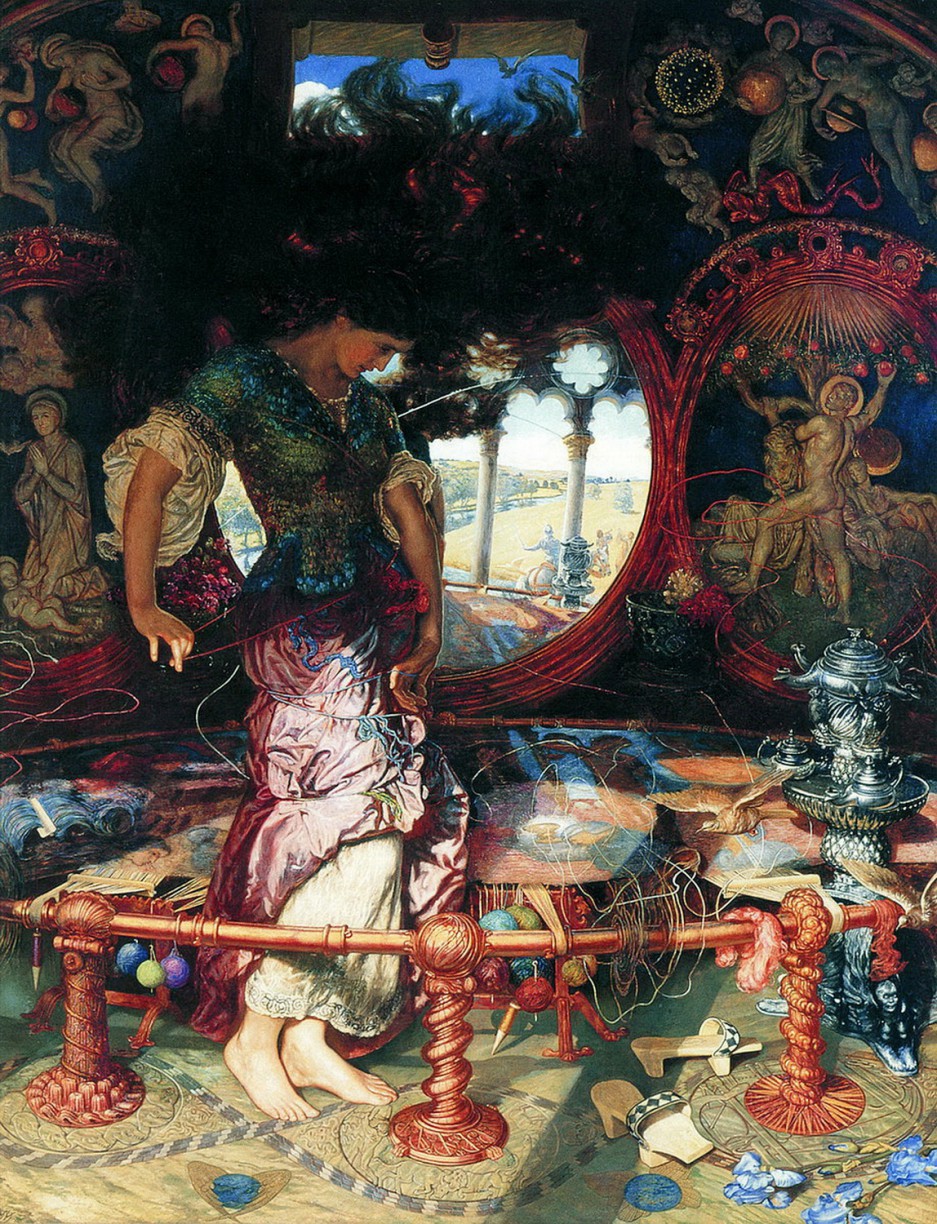 To lose my blog-virginity, I’m going to discuss a hitherto undisclosed (and unexplored) reason for conducting my PhD research in Gothic literature. I will, however, refrain from an intellectual-vomit; plenty of time for that. I’ll give free thinking a go instead.
To lose my blog-virginity, I’m going to discuss a hitherto undisclosed (and unexplored) reason for conducting my PhD research in Gothic literature. I will, however, refrain from an intellectual-vomit; plenty of time for that. I’ll give free thinking a go instead.
Ex-boyfriends complain about the difficulty they have understanding me. I’ve always found them frustratingly simple. Some might say this is one of many fundamental differences between the sexes, but I’d put it down to my poor choice of conversationalists.
I’ll admit to a few ironies (certainly not hypocrisies). The most evident is my love of Gothic literature, and how much time I’ve spent studying it, while suffering acutely from terror merely at the opening credits of a horror film.
I refuse to psychoanalyse the situation. I do, however, remember as a child I kept myself awake with fears of my parents’ death, though I don’t remember how “death” was officially introduced to me. No grandparents had died back then, and there were no pets to mourn. My goldfish never survived, true, but to this day I do not consider fish pets. Pets are petted – pettable. Goldfish are un-lamentable.
That’s not to say I’ve not watched a few horrors beyond the opening bars of darkened screen to the accompaniment of stringed music, or survived beyond. The slashers are not so much a problem; I know there’s some evil in the world, but apparently they’re all in American backwaters. It’s ghosts, demonic possessions, zombies – they’re all the real killers. I could talk about any of those, but the demonically possessed is a little easier for me to approach for now. After all, zombies are members of the uncanny valley, but I have promised no psychoanalysis.
Of course there’s a long history of such terrors in literature before any fanged ones made their on-screen debut. I do find it fascinating to interpret, precisely, why terror takes so many nefarious shapes. Devils, articulate corpses, vampires, animalistic cretins – they are all embedded in ideology as secretly as whispers in the dark. As Nina Auerbach puts it in Our Vampires, Ourselves (1995), ‘no fear is only personal: it must steep itself in its political and ideological ambience, without which our solitary terrors have no contagious resonance’ (p.3).[1]
What is it, then, that scares me so much about horror movies? I’ve promised no psychoanalysis. As a feminist, then, I’ll theorise that what I’m looking at when I see these writhing, possessed bodies of women, is that ol’ maniac-me in the attic. The continued misuse of women’s bodies in horror films, and a child’s (again, usually a girl), harks back to the duality of spirits we women are supposed to have. The Madonna-Whore dichotomy is the original Jekyll and Hyde, only any sexuality in Stevenson’s Gothic classic was securely hidden in the closet.[2] The thrashing, churning bodies sprawled across the bed sheets – and even those upside down on a ceiling – have a peculiar relationship to a sexuality unleashed.
Sexual promiscuity is equally a concern for the Gothic literature of the nineteenth-century, too. This is why Lucy Westenra is so utterly annihilated in Stoker’s Dracula (1897). The recipient of three marriage proposals, she would sooner marry them all to spare inflicting disappointment upon any of them. How very unladylike! Many critics have suggested Dracula’s attack on Lucy, and the subsequent, rape-like blood transfusions used to save her, are Stoker’s punishment for such suggestive behaviour.[3] Her death scene as vampire – all that writhing and moaning, again – is overtly sexual, complete with phallic thrusts of the penetrative stake.
The threat of death is almost always associated with sex in the Gothic. From necrophilia in The Monk (M. Lewis, 1796), incest in The Fall of the House of Usher (E. A. Poe, 1839), to lesbianism in Carmilla (S. Le Fanu, 1871), sex and death are unbreakably bonded, however implicitly they may be invoked. But Gothic literature doesn’t frighten me. Sex won’t kill me, I know. It might not always thrill me as much as the guys assume, but it won’t kill me.
When I am made to watch films like The Exorcist (1973), The Exorcism of Emily Rose (2005), and The Last Exorcism Part II (2013; an oxymoronic film), I’m watching a woman’s body breaking at the command of male guttural voices disguised as demons. Hair tumbling, mouth gaping, and legs akimbo, the body is tormented by the demands of a male audience before snapping up again into the missionary position. Has anyone ever noticed how similar that flat-backed, straight-armed position is to the body in a coffin? Sex and death, again. It’s uncanny.
Of course, there are many, non-feminist (and non-psychoanalytical) explanations to my fears of horror films. It’s in the music, the visualisation, the craft of some of the best writers and directors. Another paradox of this Gothic literature/horror film divide is my appreciation of Del Toro movies (not his 2007 offering of The Orphanage; I couldn’t face that one). That’s a topic for another blog, maybe, but I know I ought to acknowledge the exception that proves the rule.
So why is someone with a long history of terror for things that go bump in the night studying its original, literary form in the first place?
By understanding the fears of our Victorian past, I am, in some ways, hoping to understand the fears of our present. I admit, I have found it difficult to engage with the present; I’d sooner bury my head in a book than venture to the big, bad outside world. The ideologies I uncover dominating the Gothic continue to resonate with modern relationships, and this is a frightening fact for me. My exes don’t want to know the madwoman of my subconscious, that creature of sex, and passion, and love; they would rather not listen to the ramblings of my creativity. In turn, I’m made to feel anxieties which never did belong to me in the outset – to doubt my sexuality, my creations, my language.
The more I think about it, the more I realise my fear of horror films is not my own. It doesn’t belong to my body, my mind, my sexuality. These possessed women of horror are constructed by the ghosts of a patriarchal literary history, condemning the awakened woman and bringing her to the brink of orgasm (on the bed, up a wall, on the ceiling), before severing the pleasure. It’s punishment for liberalism, and I’m invited to squirm in my seat, with a pillow over my face.
Yet I earned a reputation for writing “creepy sex stuff”, according to my undergraduate supervisor. Fair enough. I’d written an odd short story about a woman saved by her cat from a would-be rapist. I also wrote How’s Your Husband? in which a Desperate Housewives-style woman jogs at midnight to avoid the scrutiny of perverts, mistaking the policeman investigating her husband’s disappearance for one such pervert. Then there was Sex in the City, a title chosen to make the men in the room freak out before they realised that no, I would never in a million years write about some sorority crew strutting through the streets of New York. I wrote it, thinking about Frank Miller’s 2005 graphic film Sin City (it’s an exceptionally slow film, but I enjoyed the colours).
They’re all pretty embarrassing five years down the line, though the latter was well-liked at the time. It just confuses my tastes all the more, I suppose. Sex, violence – sure, let’s write that up. My current protagonist-project is affectionately known (mostly to himself) as Havl the Whoremaker. But write horror? I’d scare myself, even if I wrote it badly.
This is potentially another reason for studying the Gothic: to get to grips with how to make sex a thematic point without sticking to the patriarchal missionary position. Sure, Stoker’s Dracula eventually restores the fin-de-siècle world by killing off the slut and bouncing a baby on the married woman’s lap. In fact, most of the Gothic authors celebrated in the long nineteenth-century restore sexual balance in particularly heterosexual, patriarchal terms, however much they’re recognised for subverting the norm and waving the flag of Revolution. It was a step forward, even so, to write about forbidden desires with such daring in the first place.
I’d like to write another “creepy sex stuff” story. My research focuses on the relative absence of Gothic novels in 1850 and 1860, when Sensation novels soared to success instead. If I could find a balance between my love of Gothic literature and fear of horror films, I could fill in that gap – write a Gothic horror set in those decades, something Mary Shelley would be proud of. Allow desire to run its course, without severing orgasms on the ceiling.
I don’t suppose I can explain my personal paradox just yet. Maybe I don’t need to, anyway. Having a little mystery about oneself should be a good thing. It reminds me of one of my favourite “love songs” by a beautifully pessimistic band, Coldspecks: ‘You cut me open, just to see what’s within/ Clean up these organs; wrap your words with my skin/I guess I’m just looking for a transplant lover, with infinite regrets…’ Do I know what it means? Not entirely. Do I like it, even so? Definitely.
